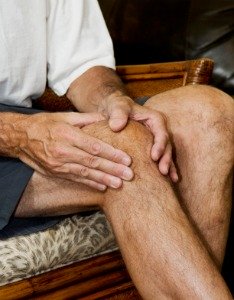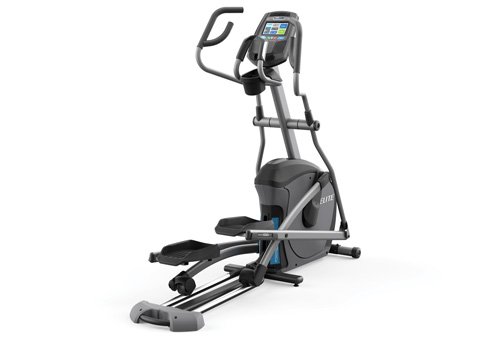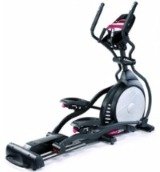Three Reasons Why an Elliptical Hurts the Knees
Users who complain that the elliptical hurts the knees during and after a workout often have other issues with the pedaling motion, including foot numbness, as well as soreness in the Achilles tendon.
If you’ve experienced similar pain or discomfort, let’s look at a three reasons why this might be happening.
1. It’s Not You – It’s the Machine
Since Precor developed the first elliptical trainer and patented the elliptical motion technology, other companies must build machines that don’t infringe on the copyrights owned by Precor. As such, many companies offer inferior striding machines that are not as comfortable as they should be.
Besides the actual elliptical motion, which can feel flat or choppy on a cheap machine, the distance between the pedals is another potential area where the elliptical hurts the knees. A crosstrainer with a wide stance will throw off the biomechanics positioning of your leg, making you take unnatural strides. The wide stance will also put stress on the hips and knees. Machines with narrow hip widths aren’t a problem for most people, although tall men often find them limiting and uncomfortable.

Taller individuals may be more comfortable on an Adaptive Motion trainer such as the Precor AMT 835, which allows for a natural gaited “swing” movement that keeps the toes in front of the knee during a forward motion. Unlike some cheap ellipticals that hurt the knees, the AMT is designed to eliminate knee pain during strenuous workouts.
Another noticeable problem is a flat pedal angle that causes heel lift. Your heels should not lift off the pedals when you are striding, no matter what elevation the ramp is set at. You want full foot support for the full oval stride; you should not be on the balls of your feet trying to simulate a stairclimber stride.
The elliptical trainer is designed to follow the motion of your feet during walking or running fluidly. That’s why a well designed elliptical is such a joy to use. The better ellipticals have angled or articulating footpads that put your body in a neutral alignment to help eliminate stresses on the hips, ankles, and knees, as well as alleviate foot numbness.
2. It’s Your Body Alignment
Some of the elliptical knee injuries, pain and problems that arise are self-induced. Perhaps it’s because of the way you pound away at the machine while maintaining bad posture, such as hanging over the console. Or, do you get bored and pedal on just the balls of your feet? You asked for it – trouble, that is. While leaning forward and pressing down with your toes will recruit more activity from the quadriceps muscles group, this will put a lot of stress on the knees, since the quads are attached to your patella (kneecap).
3. Pushing Yourself Too Hard?
Another point to consider is how much time you spend on a workout session since pushing the body too far on the elliptical hurts the knees, no matter how top-of-line your machine is.
A 20-minute or 30-minute workout daily or thrice weekly is no problem, but some people experience noticeable issues once they try to do 40 minutes or longer. For other people, it isn’t actually pain they feel so much as it is a strange clicking sensation.
If you’ve felt it in your knees after a long session, it doesn’t mean you have damaged cartilage or suffered a meniscus or ligament tear, but it should serve as a warning sign that you are overstressing the knees. Older adults especially should beware of degenerative wear and tear. In any case, limit the workout time and/or intensity to prevent damage.
As you can see, all three problems discussed can be easily addressed to eliminate any pain you feel during or after a workout. You should not have hurt knees on an elliptical if you use proper body positioning while exercising, and you don’t over-extend yourself during a workout session. If you still have physical discomfort while riding your elliptical, it is likely time to upgrade to a better machine.
What's the Solution To Elliptical Knee Pain?
Ideally, you should opt for an elliptical with great cushioning and one that puts you in the most ideal bio-mechanical position. All of our best ellipticals for the home offer both of these. You might have to spend a little more to get both, but it's definitely worth it.
If you already bought your machine, talk to your doctor and see if you can pinpoint the issue. You may just need some time off to properly rest and recover.
UPDATE: Spring Elliptical Sales are going strong!
SEE THE BEST CURRENT DEALS HERE

Best By Price Range
Under $500
$500 - $1000
$1000 - $2000
$2000 - $3000
$3000 - $4000+
Elliptical Buying Guide

8 Features to Compare
Brake Systems
Stride Length
Front vs. Rear Drive
Warranties
Consumer Reviews

Here is your chance to rant or rave about the elliptical you use at home or at the fitness center.
